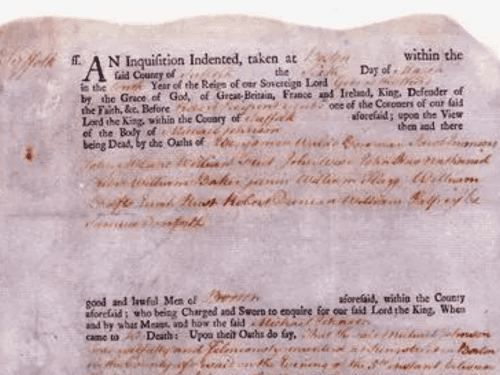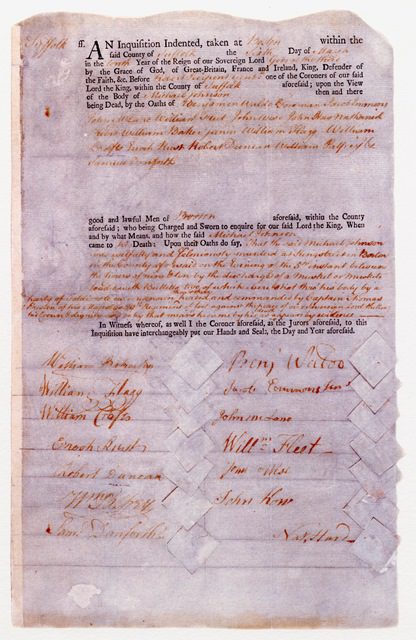
From the Boston Massacre to Black Lives Matter

Written by Katie Woods, MA in Public History student at Northeastern University
The Legacy of Crispus Attucks – Part V
This post is the final part of a series exploring the legacy of Crispus Attucks, the first victim of the Boston Massacre. These posts were written by students in the Master of Public History program at Northeastern University. Crispus Attucks was an enslaved man of African and Native American heritage about whom little is known, but his legacy has been important to successive generations of Americans. For more information about the life and legacy of Crispus Attucks, see First Martyr of Liberty: Crispus Attucks in American Memory by Mitch Kachun (Oxford University Press, 2017).
Over the almost 250 years since his death, Crispus Attucks has remained a symbol for various movements advocating for African American rights, from Abolitionism to the Civil Rights Movement. 21st Century movements have been no different. Attucks’s identity has been yet again recovered by the grassroots Black Lives Matter movement.
Crispus Attucks has been most closely identified with Michael Brown, the 18-year-old African American who was shot and killed by a police officer in Ferguson, Missouri in 2014. Political journalist Amy Goodman of Democracy Now is most blunt in this comparison, recognizing that in the coroner’s report on Attucks – the Bostonian Society holds the original – Attucks was referred to as Michael Johnson, sharing the same first name with Brown.
The similarities do not end with their first names. Both of the black men (in Attucks’s case, black and Native American) were shot and killed by authorities in rapidly escalated situations, leading to contentious trials and public calls for justice and civic rights. The events surrounding their deaths remain clouded in uncertainty today. Finally, both men have been regarded as innocent victims, martyrs for a greater cause, or suspicious men looking for trouble.
Even with these similarities, we should not ignore that these men lived over 200 years apart and were killed in very different situations. While much is unknown about Crispus Attucks, we know he was in Boston during a turbulent time. Members of the British Army (commonly known as Redcoats) had been stationed there as growing tensions led to more outbreaks of protest and violence. On the night of March 5, 1770, a crowd, or what some described as a mob, entered the square in front of the State House and proceeded to taunt the British soldier on duty. As more soldiers arrived to aid the sentry, the crowd became increasingly rowdy and shots were fired. At the end of the brawl, five men lay dead, including Crispus Attucks. We must remember that while he is the only victim of the Boston Massacre who remains a common household name today, he was likely seen as merely one of the five people killed that day. Crispus Attucks did not die because of his race, and Bostonians were just as angry at his death as the deaths of the other four men. When Crispus Attucks fell, it sparked a movement about liberty and safety in the colonies. But it was liberty and safety primarily for white men and women, not for the many enslaved blacks and free black men and women.
On the other hand, Michael Brown wasn’t part of a menacing crowd; he was walking down the street with a friend when Officer Darren Wilson approached him. Both officer and teenager may have exchanged progressively hostile comments. Misunderstanding turned into fear and aggression on both sides. It is still unclear whether Michael Brown was fleeing or running towards Officer Wilson when the officer fired those fatal shots. In the end, it doesn’t really matter. Like with the Massacre, once those shots were fired, history was changed forever. When Michael Brown fell, it triggered a new, passionate conversation about race and policing in America. Treatment of this event focused on the experience of young black men and women, and the fear and anger regarding police violence and racial profiling.
While there are inherent differences in these stories of Crispus Attucks and Michael Brown, there are enough similarities to justify the connection that Goodman constructed. Young black men whose intentions and actions were questioned. An encounter that led to a confrontation. Shots fired with questionable motives. Public protests and outcries for justice. Contested trials that led to suspects walking free. These two events sparked local and national responses. One sparked a revolution, another sparked a movement. It is likely that both of these names will continue to be ingrained in our national memory. While we all know the lasting effects of the Boston Massacre, it still remains to be seen how Michael Brown’s legacy will impact the political and social landscape of the United States.
Further Reading
Demby, Gene. “The Butterfly Effects of Ferguson.” NPR. August 11, 2016.
Goodman, Amy, and Denis Moynihan. “From Crispus Attucks to Michael Brown: Race and Revolution.” Democracy Now. March 5, 2015.
Luibrand, Shannon. “How a death in Ferguson sparked a movement in America.” CBS News. August 7, 2015.


